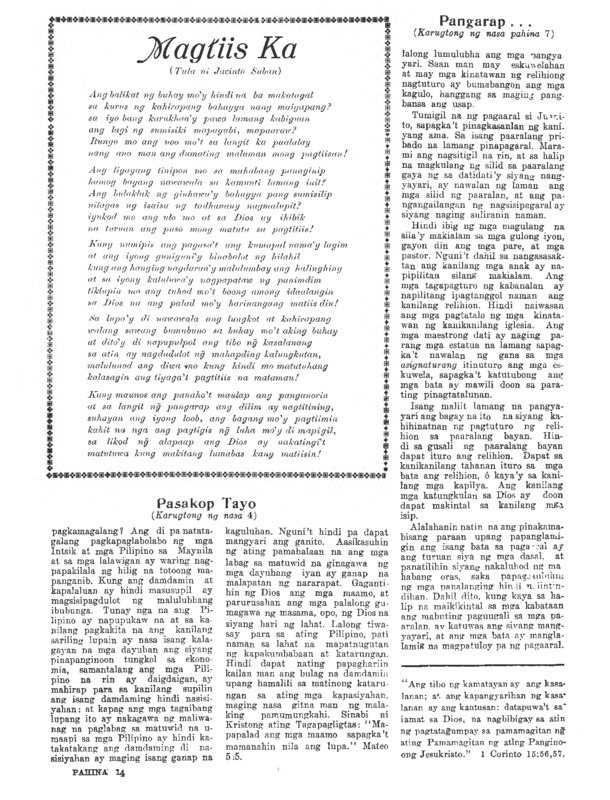
Philperiodicals expo
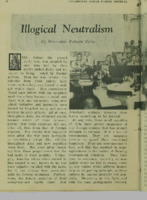
Illogical neutralism
Senator Eulogio Balao (1907-1977), a WWII veteran and head of Quirino’s anti-Huk campaigns,
he was Secretary of Defense for President Magsaysay between 1956 and 1957. In June
1956, he published Illogical Neutralism in the Philippines Armed Forces Journal where he
made a defense of the SEATO agreement that expressed the government's view on the
issue.
Balao saw WWII as an event that had waked Asian nationalism and independence after a period
of docility and foreign rule, but he stated that neutrality, seen as a product of anti-colonial era
anxieties, was an impulsive and baseless fear that could condemn weak nations to be devoured
not by Western, but by Asiatic colonialism, such as the Japanese or the Russian. During a period
marked by democracy, when no western country would consider colonizing, only Russia, due to
its dictatorial and totalitarian nature, had colonies, Balao argued.
Bllao partially expresses the fear that, after the conflicts in Korea and Vietnam, only armed force
could stop communism. For small, young countries such as the Philippines, that meant allying
with “an unselfish America” through initiatives such as the SEATO to preserve freedom,
religion, and a wholesome life that communism wasn’t seen to provide.
he was Secretary of Defense for President Magsaysay between 1956 and 1957. In June
1956, he published Illogical Neutralism in the Philippines Armed Forces Journal where he
made a defense of the SEATO agreement that expressed the government's view on the
issue.
Balao saw WWII as an event that had waked Asian nationalism and independence after a period
of docility and foreign rule, but he stated that neutrality, seen as a product of anti-colonial era
anxieties, was an impulsive and baseless fear that could condemn weak nations to be devoured
not by Western, but by Asiatic colonialism, such as the Japanese or the Russian. During a period
marked by democracy, when no western country would consider colonizing, only Russia, due to
its dictatorial and totalitarian nature, had colonies, Balao argued.
Bllao partially expresses the fear that, after the conflicts in Korea and Vietnam, only armed force
could stop communism. For small, young countries such as the Philippines, that meant allying
with “an unselfish America” through initiatives such as the SEATO to preserve freedom,
religion, and a wholesome life that communism wasn’t seen to provide.

A new strategy for Korea?
A few months after the Korean Armistice Agreement (27 July 1953), which put an end to the
Korean War and established the actual border at the 38th parallel, the Philippines Armed Forces
Journal reprinted an article from Military Review by Brigadier General Samuel Lyman Atwood
Marshall, an important journalist appointed chief combat historian of the U.S. Army during
WWII and the Korean War.
The strongly anti-communist article took up against Communist China, seen as the primary and
real enemy (at least in the Korean War), not the Soviet Union. For Marshall, the Chinese knew
what was at stake and had a clear strategy, having constantly outmatched the US-lead coalition:
the Chinese knew their objective was not the prevention of killing, but victory, and Marshall
believed the US had conformed with a stalemate, without ever committing enough resources.
Marshall advocated for “a new era of firmness” and enough budget to prepare for the next
communist aggression in Asia.
The reprint also included several pictures of the Filipino troops, fighting, praying, and enjoying
the visit of Filipino stars such as Pablo Virtuoso, Cora Madrid, or Rumelia Flores. Thank to that
we can imagine how their life was during the armistice negotiations
Korean War and established the actual border at the 38th parallel, the Philippines Armed Forces
Journal reprinted an article from Military Review by Brigadier General Samuel Lyman Atwood
Marshall, an important journalist appointed chief combat historian of the U.S. Army during
WWII and the Korean War.
The strongly anti-communist article took up against Communist China, seen as the primary and
real enemy (at least in the Korean War), not the Soviet Union. For Marshall, the Chinese knew
what was at stake and had a clear strategy, having constantly outmatched the US-lead coalition:
the Chinese knew their objective was not the prevention of killing, but victory, and Marshall
believed the US had conformed with a stalemate, without ever committing enough resources.
Marshall advocated for “a new era of firmness” and enough budget to prepare for the next
communist aggression in Asia.
The reprint also included several pictures of the Filipino troops, fighting, praying, and enjoying
the visit of Filipino stars such as Pablo Virtuoso, Cora Madrid, or Rumelia Flores. Thank to that
we can imagine how their life was during the armistice negotiations
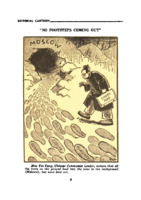
No Footsteps coming out
The Cross: National Catholic Magazine was the official bi-monthly organ of the Knights of
Columbus in the Philippines, a catholic order brought to the Philippines in 1905 and filipinized
in 1918. The Cross included all kinds of opinion articles, but also reader’s contributions, prayers,
news digest, and book reviews. During the Cold War, it followed a strong anti-communist line,
following Piux XII's encyclical Summi Maeroris (1950).
On May 1950, it expressed the fears of Asian Catholics, after the victory of Mao Zedong in the
Chinese civil war and the establishment of the People's Republic of China on 1 October 1949 with
an editorial cartoon, “No Footsteps coming out” from the Moscow Cave. The image, portraying Mao
dressed like a Mandarin, suggested the end of traditional Chinese culture, to be devoured by the
Soviet Union, and the submission of the Chinese State to the Soviet strategy as it had happened in
Eastern Europe. In March 1950 the Chinese government launched a Stalinist anti-
counterrevolutionaries campaign the image interpellated the reader's fear of an enemy now at the
doors of the Philippines. As the front page of the number shows, the Catholic Church saw itself
especially menaced by these soviet victories.
Columbus in the Philippines, a catholic order brought to the Philippines in 1905 and filipinized
in 1918. The Cross included all kinds of opinion articles, but also reader’s contributions, prayers,
news digest, and book reviews. During the Cold War, it followed a strong anti-communist line,
following Piux XII's encyclical Summi Maeroris (1950).
On May 1950, it expressed the fears of Asian Catholics, after the victory of Mao Zedong in the
Chinese civil war and the establishment of the People's Republic of China on 1 October 1949 with
an editorial cartoon, “No Footsteps coming out” from the Moscow Cave. The image, portraying Mao
dressed like a Mandarin, suggested the end of traditional Chinese culture, to be devoured by the
Soviet Union, and the submission of the Chinese State to the Soviet strategy as it had happened in
Eastern Europe. In March 1950 the Chinese government launched a Stalinist anti-
counterrevolutionaries campaign the image interpellated the reader's fear of an enemy now at the
doors of the Philippines. As the front page of the number shows, the Catholic Church saw itself
especially menaced by these soviet victories.
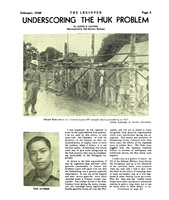
Underscoring the HUK problem
The Legioner, was the official monthly organ of the Philippines Legion, a veteran association
created by Manuel Roxas in 1948. Its contents were mainly military, which made it a very
interesting source to understand the military conflicts of the period from a Filipino perspective.
In all the issues hold in the UPD collection the Huk insurgent appears as a very important topic.
Underscoring the HUK problem was written for the number of February 1948 by Alejo S.
Santos, representative of the 2nd district of Bulacan, and it’s interesting for the crude photos
(courtesy of Manila Chronicle) that it included. Santos, former CO of the Bulacan Military Area
during the Ocuppation, defended that violence was not the best means to solve the problem and
confirmed first hand that the Huk, one of the best anti-japanese guerillas, never stayed away
from the ways of peace or terrorized the people of Bulacan until Partido Komunista ng Pilipinas’
efforts to ameliorate farmers' conditions (and its electoral victory) were neglected by the Partido
Liberal, whose measures were ineffective against landlord rule. In fact, the victims of the
military actions were the poor barrio residents that only attended to destroy feudalism, which
only fueled the conflict.
created by Manuel Roxas in 1948. Its contents were mainly military, which made it a very
interesting source to understand the military conflicts of the period from a Filipino perspective.
In all the issues hold in the UPD collection the Huk insurgent appears as a very important topic.
Underscoring the HUK problem was written for the number of February 1948 by Alejo S.
Santos, representative of the 2nd district of Bulacan, and it’s interesting for the crude photos
(courtesy of Manila Chronicle) that it included. Santos, former CO of the Bulacan Military Area
during the Ocuppation, defended that violence was not the best means to solve the problem and
confirmed first hand that the Huk, one of the best anti-japanese guerillas, never stayed away
from the ways of peace or terrorized the people of Bulacan until Partido Komunista ng Pilipinas’
efforts to ameliorate farmers' conditions (and its electoral victory) were neglected by the Partido
Liberal, whose measures were ineffective against landlord rule. In fact, the victims of the
military actions were the poor barrio residents that only attended to destroy feudalism, which
only fueled the conflict.

Frederick Starr’s thoughts on Prince Keiki’s abdication
Iwao Ōyama (1842-1916) was one of the founders of the Imperial Japanese Army and Supreme Commander of the Japanese Manchurian Army during the Russo-Japanese war of 1904-1905. As such, he led the Japanese forces in all major battles, making him a prominent part of Japan’s victory in the war. This article written in Tagalog is part of a two-part article that discusses Marquess Ōyama, his wife Sutematsu Ōyama, and the Russo-Japanese war. More specifically, the article expresses Filipino admiration for the Japanese victory achieved under the Marquess’ leadership as it proved that Asian nations could come out victorious in battles with European powers. As for his wife, the Marquise Ōyama, the author mentions that she was one of the first female students to receive an education in the USA as part of the Iwakura Mission.

Tagalog translation of a poem written by the Emperor Meiji
Mutsuhito (1852-1912) was the first monarch of the Empire of Japan reigning from 1867 until his death in 1912. Traditionally, when a Japanese emperor dies, he is given a posthumous name. For that reason, after his death, Mutsuhito was known as Emperor Meiji referring to the Meiji era during which he reigned. Besides ruling over Japan, Emperor Meiji also spent his time writing poetry. However, an emperor who wrote poems was not a given seeing as how the author expresses his surprise over the poem he translated from Japanese to Tagalog

General Ōyama and the Russo-Japanese war
Iwao Ōyama (1842-1916) was one of the founders of the Imperial Japanese Army and Supreme Commander of the Japanese Manchurian Army during the Russo-Japanese war of 1904-1905. As such, he led the Japanese forces in all major battles, making him a prominent part of Japan’s victory in the war. This article written in Tagalog is part of a two-part article that discusses Marquess Ōyama, his wife Sutematsu Ōyama, and the Russo-Japanese war. More specifically, the article expresses Filipino admiration for the Japanese victory achieved under the Marquess’ leadership as it proved that Asian nations could come out victorious in battles with European powers. As for his wife, the Marquise Ōyama, the author mentions that she was one of the first female students to receive an education in the USA as part of the Iwakura Mission.

Picture of students commemorating the death of Ángeles López Montero
The photograph pictured above the accompanying article shows a group of Filipino students commemorating the first anniversary of the death of María Ángeles López Montero, the wife of Isabelo de los Reyes (1864-1938). The group consists of: Inocencio H.Marzo from San Fernando, La Union (Medicine, Japon Medical College); Jose Kison from Gapang, Nueva Ecija (Medicine, Japon Medical College); Magno R. Yusay from Meycauayan, Bulacan (Medicine, Japon Medical College); Gil V. de Santos from San Rafael, Bulacan (Dentistry, Universidad Imperial); Mariano K. Kison from Lipa, Batangas (Empress Medical College); Alejandro S. Eguia; Ambrosio R. Olivar from Villasis, Pangasinan (Chemistry, Tokyo Duncan College); Gonzalo P. Aquino from Murcia, Tarlac (Industrial Engineering, Colegio Tecnico superior de Tokyo); Honorio Evangelista from Candaba, Pampanga (Ceramics, Honjo Pottery School); Emilio Gonzalez from Apalit, Pampanga (Industrial Chemistry, Universidad Imperial de Tokyo); José D. Ampil; Martin Alcántara from San Pablo, Laguna (Languages, Kanda Foreign Language School)
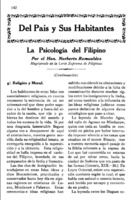
Del país y sus habitantes: la psicología del filipino
Norberto Romualdez (1875-1941) was a politician and polyglot writer responsible for writing, for example, the first sarswela in Samareño. The article "Del País y sus habitantes: la psicología del filipino" is part of a series he published in book form in English in 1925 under the title The Psychology of the Filipino. The text deals with different native and pre-Hispanic customs in the style of 19th century anthropologists and folklorists such as, in the Philippine context, Isabelo de los Reyes.
In this article, tension is created between the scientific distance that places the writer outside the presumably uncivilized customs of his ancestors and countrymen for the Western public, and the certainty of being indigenous to that same area and being as a politician, inserted in the pursuit of a national construction. Such a tension is seen from the very first lines, in which Romualdez oscillates in his writing from using the third person to using the first person in order to speak about his compatriots: "[if] Christianity were ever to disappear from here, our people, simple given their innate religiosity, would immediately give in to superstition and idolatry". The paradox is that, theoretically, the magazine The Missionary, in which this article is published, had as its target audience the non-Christianized people of the Mountain Province (in the north of the island of Luzon).
In discussing medicine and the role of the Babaylan, he frames the Philippine past in global history, suggesting that cultures around the world shared common traits such as attributing supernatural causes to illness. In line with this, he discusses the mystical and healing role of Filipino women priestesses or "babaylanes," who used the performative power of the word, that is, by means of incantations and sacred words they were able to cast out evil spirits and heal. Those women had a preeminent role in society, which Romualdez, on this occasion, does not write too much about.
In this article, tension is created between the scientific distance that places the writer outside the presumably uncivilized customs of his ancestors and countrymen for the Western public, and the certainty of being indigenous to that same area and being as a politician, inserted in the pursuit of a national construction. Such a tension is seen from the very first lines, in which Romualdez oscillates in his writing from using the third person to using the first person in order to speak about his compatriots: "[if] Christianity were ever to disappear from here, our people, simple given their innate religiosity, would immediately give in to superstition and idolatry". The paradox is that, theoretically, the magazine The Missionary, in which this article is published, had as its target audience the non-Christianized people of the Mountain Province (in the north of the island of Luzon).
In discussing medicine and the role of the Babaylan, he frames the Philippine past in global history, suggesting that cultures around the world shared common traits such as attributing supernatural causes to illness. In line with this, he discusses the mystical and healing role of Filipino women priestesses or "babaylanes," who used the performative power of the word, that is, by means of incantations and sacred words they were able to cast out evil spirits and heal. Those women had a preeminent role in society, which Romualdez, on this occasion, does not write too much about.
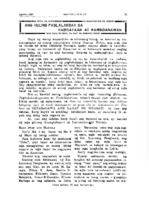
Ang Huling paglalakbay sa kabisayaan at kamindanawan
Domingo Ponce, along with Crisanto Evangelista and Cirilo Bognot, was the founder of the "Partido Obrero de Filipinas" (Labor Party of the Philippines). Founded in 1924,this organization saw itself as the antithesis of colonial political parties and went so far as to label other politicians as "traitors to independence" (Constantino, 1975, P. 360). A year before the establishment of the organization, this article, written by Domingo Ponce, was published in the Bogang-Buhay newspaper. Much like other travelogues in which authors include similarities to their homeland, the article shows how members of the Lehion Lodge hold on to their homes. More specifically, the members leave Manila for Cebu, but when their boat gets delayed they rejoice in the fact that they get to stay in the city for a few more hours. Moreover, when the boat eventually does depart, the members keep their eye out for Manila until the city is no longer visible. It is interesting how, in their purpose of building a nation, travelogues served not just as a point of comparison when writers traveled abroad, but also as a way to explore and make their own country known.

México Bucólico
Jesús Balmori (1887-1948) was a Filipino poet, playwright, and novelist who wrote in Spanish. One of his most celebrated works is the collection of poems called Mi Casa de Nipa, with which he won first prize in the national literary contest in 1938. Seven years earlier, in 1931, Balmori had traveled to Mexico with the aim of making Spanish-Filipino literature known in Latin America and of delivering a conference in verse about Japan. He chose a very bad moment for doing so: his references for poetry in Mexico were modernistas, such as Amado Nervo or Salvador Díaz Mirón, who were long outdated and almost despised by the more avant-garde generation of poets of the early 1930s, called Los contemporáneos. This frustrated him up to a point that he ended up saying (in an interview by his friend Manuel Bernabé) that there were no real poets in Mexico, none that could be compared to Filipino poets. Furthermore, at that time Japan had invaded Manchuria and there was a negative view of a country that was trying to colonize another one, in a kind of rehearsal of the colonizing attempts that Japan would carry out later on in the Asian Pacific. Being Mexico an ex-colonial country, they were not very keen to listen to accounts about the idealized wonders of Japan.
When he got back to the Philippines, he wrote a very interesting travelogue in different installments about his trip. The first part is a classic narrative account of his stops in Japan, Hawaii, and the US. In the second part, Balmori narrates his stay in Mexico in poems describing his expectations and experiences in a critical manner. These poems could be read in the Philippine newspaper Excelsior –different from the famous Mexican newspaper of the same name. In this particular poem, Balmori evokes a boat trip in Xochimilco. He does not describe Mexico in an entirely positive way, but still, he points out several similarities between the country and the Philippines, such as "There are restaurant-boats with a Filipino-like aroma that makes us hungry". That Balmori finds similarities between Mexico and the Philippines is not completely unexpected as both countries share the Spanish language and colonial history, the Philippines being a capitanía from the viceroyalty of Nueva España (now Mexico and Guatemala).
When he got back to the Philippines, he wrote a very interesting travelogue in different installments about his trip. The first part is a classic narrative account of his stops in Japan, Hawaii, and the US. In the second part, Balmori narrates his stay in Mexico in poems describing his expectations and experiences in a critical manner. These poems could be read in the Philippine newspaper Excelsior –different from the famous Mexican newspaper of the same name. In this particular poem, Balmori evokes a boat trip in Xochimilco. He does not describe Mexico in an entirely positive way, but still, he points out several similarities between the country and the Philippines, such as "There are restaurant-boats with a Filipino-like aroma that makes us hungry". That Balmori finds similarities between Mexico and the Philippines is not completely unexpected as both countries share the Spanish language and colonial history, the Philippines being a capitanía from the viceroyalty of Nueva España (now Mexico and Guatemala).
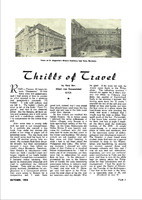
Thrills of Travel
Albert van Gansewinkel (1903-1999) was the Father Rector of the University of San Carlos in Cebu City. In 1953, he traveled from Italy to his homeland Germany and wrote a travelogue of his trip, which was published in the newspaper of his alma mater, The Carolinian. Interestingly, van Gansewinkel constantly refers to the Philippines in his account of his incursion in Europe, and even has slides about San Carlos available to show to those interested. The trip narrative works then both ways: he tells the Philippine public about Europe, highlighting differences such as the weather, traffic, or the structure of the city, while telling Europeans about the Philippines.

Impresiones de un viaje rápido
This article, written by Manuel B. Montes, was published in the Spanish-language daily newspaper Excelsior, founded in 1917 by Rafael Alducin. Montes gives an account of his trip to Paris and comments various Parisian features that he deems admirable: the many taxis that are available throughout the city–although the traffic is not something to write home about; the fact that women are free to wander the streets on their own–as the police protects them; and the well-illuminated streets at night, which make it a pleasure to explore the city. These characteristics are described in such a positive light that they seem to be ideas that could be adopted in the Philippines.
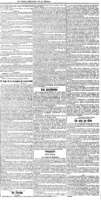
Comunicado desde España. Los indios de Filipinas
The ilustrado Graciano López Jaena (1856-1896) was a Filipino journalist and reformist who was also the editor of the Filipino newspaper published in Spain La Solidaridad, which included articles about the cultural, economic, and social conditions of the Philippines in order to increase Spanish awareness of its colony. Some well-known Filipinos who wrote for this newspaper and who were the founders of the affiliated organization were José Rizal and Antonio Luna.
In this article, published by the Spanish newspaper El Liberal, Lopez Jaena criticizes non-truthful reports on the Philippines and especially those written by Pablo Feced "Quioquiap", among which the racist article "Ellos y nosotros", published in the same newspaper three days earlier.
A comprehensive sentence from López Jaena’s article is the following: “To vindicate before the public the good name of the Philippines from the insults and unjust aggressions inflicted by the pen of Quioquiap, and so that neither here nor there it will be believed that we are such as he describes in his articles, are our object in writing these lines”. López Jaena states that it is the job of Filipinos to describe themselves, their country, and their culture and that descriptions by others about the Philippines cannot be taken as true.
In this article, published by the Spanish newspaper El Liberal, Lopez Jaena criticizes non-truthful reports on the Philippines and especially those written by Pablo Feced "Quioquiap", among which the racist article "Ellos y nosotros", published in the same newspaper three days earlier.
A comprehensive sentence from López Jaena’s article is the following: “To vindicate before the public the good name of the Philippines from the insults and unjust aggressions inflicted by the pen of Quioquiap, and so that neither here nor there it will be believed that we are such as he describes in his articles, are our object in writing these lines”. López Jaena states that it is the job of Filipinos to describe themselves, their country, and their culture and that descriptions by others about the Philippines cannot be taken as true.
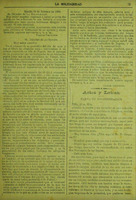
Carta de recomendación
Antonio Luna y Novicio (1866-1899) is well known for having been the Commanding General of the Philippine Army from 1898 until his death in 1899, as portrayed in a famous Filipino film, Heneral Luna (2015). Before being active in the Filipino army, Antonio Luna lived in Madrid where he was completing his studies in Pharmacy. There, he wrote for La Solidaridad, the newspaper of an organization of Philippine people living in Spain led by José Rizal. The newspaper was founded to increase Spanish awareness of the Philippines and to advocate for reforms in the colonial system. There, Antonio Luna wrote a serialized account of his travels in Spain under the pen-name Taga-Ilog, in which he discussed Spanish customs and idiosyncrasies with ironical criticism as a reply to colonialist accounts published by Spaniards about the Philippines, such as Quioquiap’s book Filipinas: Esbozos y pinceladas (1888).
These accounts of Spain published in La Solidaridad were later bundled and published as a travel book called Impresiones (1891). In this particular account, Antonio Luna describes his meeting with Sr. D. Gregorio upon his arrival in Madrid. Both hold different opinions on the young Filipinos in Spain with Sr. D. Gregorio warning Luna about these "lost" souls and Antonio Luna having hope for his compatriots. In the end, when it is revealed that Sr. D. Gregorio's stories are not entirely truthful, it can be indeed understood that Luna's account is also a response to racist travel stories.
These accounts of Spain published in La Solidaridad were later bundled and published as a travel book called Impresiones (1891). In this particular account, Antonio Luna describes his meeting with Sr. D. Gregorio upon his arrival in Madrid. Both hold different opinions on the young Filipinos in Spain with Sr. D. Gregorio warning Luna about these "lost" souls and Antonio Luna having hope for his compatriots. In the end, when it is revealed that Sr. D. Gregorio's stories are not entirely truthful, it can be indeed understood that Luna's account is also a response to racist travel stories.
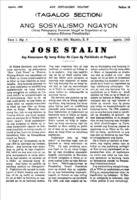
Biography of Josef Stalin
To understand the proliferation of the biographical genre in the Philippine literary scene, two factors must be taken into account. On the one hand, the literary tradition: Philippine metrical romances, awits and corridos, tended to describe the lives of heroes in an epic manner. Damiana Eugenio affirms that this biographical theme came from pre-Hispanic times, when the deeds of heroes were also sung in oral literature. On the other hand, the colonial and post-colonial contexts, under which the country needed heroes to unite the people and represent the values that should define the nation. A paradigmatic example is the conversion of Rizal into a national hero through different narratives, such as the biography written about him by Rafael de Palma.
In the first decades of the 20th century, two new ideologies emerged that would gain multiple followers and end up being banned in many territories due to the violent events that were generated by them: fascism and communism. In a country occupied by the United States, the champion of anti-communism, the publication of a socialist newspaper was an anti-colonial statement. Moreover, publishing an epic biography of Soviet leader Josef Stalin also functioned as a state proposal for a future independent Philippines.
In the first decades of the 20th century, two new ideologies emerged that would gain multiple followers and end up being banned in many territories due to the violent events that were generated by them: fascism and communism. In a country occupied by the United States, the champion of anti-communism, the publication of a socialist newspaper was an anti-colonial statement. Moreover, publishing an epic biography of Soviet leader Josef Stalin also functioned as a state proposal for a future independent Philippines.
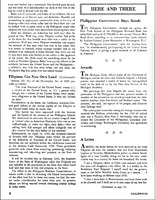
Buenaventura J. Bello
World War II resulted in the destruction of Manila among other cities and the death of thousands of Filipinos. Many of those who survived were traumatized by witnessing events of unprecedented violence by the Japanese and the destruction of Manila's Intramuros neighborhood at the hands of the Americans. These horrific scenes were captured in accounts that were published in different forums.
Psychologists and philosophers have agreed on the difficulty of putting traumatic events into words. For this reason, some of the stories are full of onomatopoeias and noises, something that has been called "Thanatosonics". They also abound with descriptions of images that portray the event rather than the sensations involved.
This epic account published in the magazine Philippines describes in detail the image of the death of the teacher Buenaventura J. Bello at the hands of a cruel Japanese soldiers for refusing to fold the American flag.
The article has a high aesthetic value that favors the portrayal of Bello as a hero in a magazine whose editorial line supported U.S. domination of the archipelago. Although on this occasion the account is written by a third party (since Bello's assassination is narrated), first-person accounts of the Battle of Manila, the Battle of Bataan, and other confrontations in the Philippines were very frequent.
Psychologists and philosophers have agreed on the difficulty of putting traumatic events into words. For this reason, some of the stories are full of onomatopoeias and noises, something that has been called "Thanatosonics". They also abound with descriptions of images that portray the event rather than the sensations involved.
This epic account published in the magazine Philippines describes in detail the image of the death of the teacher Buenaventura J. Bello at the hands of a cruel Japanese soldiers for refusing to fold the American flag.
The article has a high aesthetic value that favors the portrayal of Bello as a hero in a magazine whose editorial line supported U.S. domination of the archipelago. Although on this occasion the account is written by a third party (since Bello's assassination is narrated), first-person accounts of the Battle of Manila, the Battle of Bataan, and other confrontations in the Philippines were very frequent.
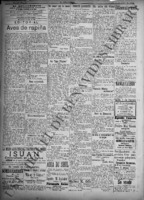
Aves de rapiña
The editorial is a type of short essay that advocates some cause, often of a political nature. Political literature has frequently been labeled as pamphleteering and regarded as non-literary political writing or, with luck, as bad literature. However, in certain contexts, the signaling of political events or social circumstances is fundamental for the country, and aliterature written simply for the sake of art would be alien to certain realities. Furthermore, it is superfluous and probably elitist to consider literature only waht has been written for no other purpose than literary delight.
"Aves de rapiña" (Birds of prey) is likely the most famous editorial in Philippine history. Under the metaphor of birds lies a scathing criticism of colonialism, the U.S. administration, and ultimately, of Dean Conan Worcester, head of the U.S. Commission in the Philippines to advise the U.S. government on policies to be implemented in the colony.
Although no specific names are given in the editorial, Worcester's policies and attitudes are spelled out. The editorial, written by Fidel Reyes in the newspaper El Renacimiento on October 30, 1908, begins with some general considerations about the powerful and the oppressed, already using the metaphor of nature and animals: "In the extension of the globe, some are born to eat and devour, others to be eaten and devoured". It is not trivial that birds and animals are mentioned (lions, eagles, snakes, vultures, and owls appear to represent the oppressors): Dean C. Worcester was an American zoologist specializing in ornithology.
Building on that generalist introduction, Reyes focuses on the eagle, a symbol of the United States, as a trickster bird. As he says, "symbolizing freedom and strength, it is the bird that has found the most followers, and men, collectively and individually, have wanted to imitate the most rapacious bird, to succeed in plundering their fellow men." Finally, he speaks of men who, beyond of eagles, have characteristics "of the vulture, the owl, and the vampire." It is from here on that, in parallelistic paragraphs that begin with gerunds, he enumerates all the bad practices carried out by Worcester.
The commissioner took offense and sued the newspaper. Two years later, in 1910, Reyes and those responsible for El Renacimiento, among them Teodoro M. Kalaw, director of the National Library, were found guilty and sentenced to pay the offended party a sum of pesos that ruined the newspaper and led to its closure in 1910. Those responsible were sentenced to prison time, but the judicial battle of appeals lasted until 1914 and they were finally pardoned. The report of one of these appeals included the full article translated into English, the official language of the country at the time, as reproduced below:
On the surface of the globe some were born to eat and devour, others to be eaten and devoured.
Now and then the latter have bestirred themselves, endeavoring to rebel against an order of things which makes them the prey and food of the insatiable voracity of the former. At times they have been fortunate, putting to flight the eaters and devourers, but in the majority of cases they did not obtain but a change of name or plumage.
The situation is the same in all the spheres of creation: the relation between the ones and the others is that dictated by the appetite and the power to satisfy it at the fellow-creatures' expense.
Among men it is very easy to observe the development of this daily phenomenon. And for some psychological reason the nations who believe themselves powerful have taken the fiercest and most harmful creatures as emblems; it is either the lion, or the eagle, or the serpent. Some have done so by a secret impulse of affinity and others in the nature of simulation, of infatuated vanity, making themselves appear that which they are not nor ever can be.
The eagle, symbolizing liberty and strength, is the bird that has found the most adepts. And men, collectively and individually, have desired to copy and imitate the most rapacious bird in order to triumph in the plundering of their fellow-men.
There are men who, besides being eagles, have the characteristics of the vulture, the owl and the vampire.
Ascending the mountains of Benguet to classify and measure the skulls of the Igorots and study and civilize them and to espy in his flight, with the eye of the bird of prey, where are the large deposits of gold, the prey concealed amidst the lonely mountains, to appropriate them to himself afterwards, thanks to legal facilities made and unmade at will, but always for his own benefit.
Authorizing, despite laws and ordinances, an illegal slaughtering of diseased cattle in order to derive benefit from the infected and putrid meat which he himself was obliged to condemn by virtue of his official position.
Presenting himself on all occasions with the wrinkled brow of the scientist who consumes his life in the mysteries of the laboratory of science, when his whole scientific labor is confined o dissecting insects and importing fish eggs, as if the fish eggs of this country were less nourishing and less savory, so as to make it worth the while replacing them with species coming from other climes.
Giving an admirable impulse to the discovery of wealthy lodes in Mindoro, in Mindanao, and in other virgin regions of the Archipelago, with the money of the people, and under the pretext of the public good, when, as a strict matter of truth, the object is to possess all the data and the key to the national wealth for his essentially personal benefit, as is shown by the acquisition of immense properties registered under he names of others.
Promoting, through secret agents and partners, the sale to the city of worthless land at fabulous prices which the city fathers dare not refuse, from fear of displeasing the one who is behind the motion, and which they do not refuse for their own good.
Patronizing concessions for hotels on filled-in-land, with the prospects of enormous profits, at the expense of the blood of the people.
Such are the characteristics of the man who is at the same time an eagle who surprises and devours, a vulture who gorges himself on the dead and putrid meats, an owl who affects a petulent omniscience, and a vampire who silently sucks the blood of the victim until he leaves it bloodless.
It is these birds of prey who triumph. Their flight and their aim are never thwarted.
Who will detain them?
Some share in the booty and the plunder. Others are too weak to raise a voice of protest. And others die in the disconsolating destruction of their own energies and interests.
And then there appears, terrifying, the immortal legend:
MANE, TECEL, PHARES.
"Aves de rapiña" (Birds of prey) is likely the most famous editorial in Philippine history. Under the metaphor of birds lies a scathing criticism of colonialism, the U.S. administration, and ultimately, of Dean Conan Worcester, head of the U.S. Commission in the Philippines to advise the U.S. government on policies to be implemented in the colony.
Although no specific names are given in the editorial, Worcester's policies and attitudes are spelled out. The editorial, written by Fidel Reyes in the newspaper El Renacimiento on October 30, 1908, begins with some general considerations about the powerful and the oppressed, already using the metaphor of nature and animals: "In the extension of the globe, some are born to eat and devour, others to be eaten and devoured". It is not trivial that birds and animals are mentioned (lions, eagles, snakes, vultures, and owls appear to represent the oppressors): Dean C. Worcester was an American zoologist specializing in ornithology.
Building on that generalist introduction, Reyes focuses on the eagle, a symbol of the United States, as a trickster bird. As he says, "symbolizing freedom and strength, it is the bird that has found the most followers, and men, collectively and individually, have wanted to imitate the most rapacious bird, to succeed in plundering their fellow men." Finally, he speaks of men who, beyond of eagles, have characteristics "of the vulture, the owl, and the vampire." It is from here on that, in parallelistic paragraphs that begin with gerunds, he enumerates all the bad practices carried out by Worcester.
The commissioner took offense and sued the newspaper. Two years later, in 1910, Reyes and those responsible for El Renacimiento, among them Teodoro M. Kalaw, director of the National Library, were found guilty and sentenced to pay the offended party a sum of pesos that ruined the newspaper and led to its closure in 1910. Those responsible were sentenced to prison time, but the judicial battle of appeals lasted until 1914 and they were finally pardoned. The report of one of these appeals included the full article translated into English, the official language of the country at the time, as reproduced below:
On the surface of the globe some were born to eat and devour, others to be eaten and devoured.
Now and then the latter have bestirred themselves, endeavoring to rebel against an order of things which makes them the prey and food of the insatiable voracity of the former. At times they have been fortunate, putting to flight the eaters and devourers, but in the majority of cases they did not obtain but a change of name or plumage.
The situation is the same in all the spheres of creation: the relation between the ones and the others is that dictated by the appetite and the power to satisfy it at the fellow-creatures' expense.
Among men it is very easy to observe the development of this daily phenomenon. And for some psychological reason the nations who believe themselves powerful have taken the fiercest and most harmful creatures as emblems; it is either the lion, or the eagle, or the serpent. Some have done so by a secret impulse of affinity and others in the nature of simulation, of infatuated vanity, making themselves appear that which they are not nor ever can be.
The eagle, symbolizing liberty and strength, is the bird that has found the most adepts. And men, collectively and individually, have desired to copy and imitate the most rapacious bird in order to triumph in the plundering of their fellow-men.
There are men who, besides being eagles, have the characteristics of the vulture, the owl and the vampire.
Ascending the mountains of Benguet to classify and measure the skulls of the Igorots and study and civilize them and to espy in his flight, with the eye of the bird of prey, where are the large deposits of gold, the prey concealed amidst the lonely mountains, to appropriate them to himself afterwards, thanks to legal facilities made and unmade at will, but always for his own benefit.
Authorizing, despite laws and ordinances, an illegal slaughtering of diseased cattle in order to derive benefit from the infected and putrid meat which he himself was obliged to condemn by virtue of his official position.
Presenting himself on all occasions with the wrinkled brow of the scientist who consumes his life in the mysteries of the laboratory of science, when his whole scientific labor is confined o dissecting insects and importing fish eggs, as if the fish eggs of this country were less nourishing and less savory, so as to make it worth the while replacing them with species coming from other climes.
Giving an admirable impulse to the discovery of wealthy lodes in Mindoro, in Mindanao, and in other virgin regions of the Archipelago, with the money of the people, and under the pretext of the public good, when, as a strict matter of truth, the object is to possess all the data and the key to the national wealth for his essentially personal benefit, as is shown by the acquisition of immense properties registered under he names of others.
Promoting, through secret agents and partners, the sale to the city of worthless land at fabulous prices which the city fathers dare not refuse, from fear of displeasing the one who is behind the motion, and which they do not refuse for their own good.
Patronizing concessions for hotels on filled-in-land, with the prospects of enormous profits, at the expense of the blood of the people.
Such are the characteristics of the man who is at the same time an eagle who surprises and devours, a vulture who gorges himself on the dead and putrid meats, an owl who affects a petulent omniscience, and a vampire who silently sucks the blood of the victim until he leaves it bloodless.
It is these birds of prey who triumph. Their flight and their aim are never thwarted.
Who will detain them?
Some share in the booty and the plunder. Others are too weak to raise a voice of protest. And others die in the disconsolating destruction of their own energies and interests.
And then there appears, terrifying, the immortal legend:
MANE, TECEL, PHARES.
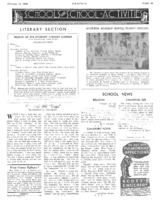
My Blind Old Yaya
Since the birth of national consciousness in Philippine writers and intellectuals, the retrieval of folk stories was present in their narratives. At the end of the 19th century and until independence in 1946, at a time when attempts were being made to discern what the Filipino essence was beyond the history of successive colonizations, the return to indigenism was a useful resource as counter-literature, outside the Western canon and what was taught as "correct literature" in the schools. Folk tales appeared in places and genres as disparate as newspaper editorials, the speeches of the suffragette Rosa Sevilla de Alvero or the scholarly texts of Isabelo de los Reyes. And in literature: in novels and short stories like "My Blind Old Yaya", by Ramon D. Soliman.
As a student, Soliman recounts his personal experience of how he came to know the mythical figure of the "Aswang" through his yaya. In this, he connects with Adelina Gurrea's book Cuentos de Juana, which also unpacks a series of mythological stories through the tales of the narrator's yaya. As opposed to other mythological stories told by Americans or by Spaniards, who take them as curiosities or objects of study and sometimes even as justification of the "difference" of the Filipino people from the West, Soliman's story introduces the mythological characters in his day-to-day life, explains his personal experience with the idea of the aswang, and how it affected his routine. It can be confronted with the account of Francis Lewis Minton, an American citizen living in the Philippines, who in an article in The American Chamber of Commerce in 1929 spoke of the same being, the Aswang, from a disbelieving distance to highlight the obscure beliefs and backwardness of the Filipino people.
As a student, Soliman recounts his personal experience of how he came to know the mythical figure of the "Aswang" through his yaya. In this, he connects with Adelina Gurrea's book Cuentos de Juana, which also unpacks a series of mythological stories through the tales of the narrator's yaya. As opposed to other mythological stories told by Americans or by Spaniards, who take them as curiosities or objects of study and sometimes even as justification of the "difference" of the Filipino people from the West, Soliman's story introduces the mythological characters in his day-to-day life, explains his personal experience with the idea of the aswang, and how it affected his routine. It can be confronted with the account of Francis Lewis Minton, an American citizen living in the Philippines, who in an article in The American Chamber of Commerce in 1929 spoke of the same being, the Aswang, from a disbelieving distance to highlight the obscure beliefs and backwardness of the Filipino people.

Magtiis ka
In Spanish at least, one of the most popular genres of Philippine literature is poetry. The fondness comes from pre-Hispanic times when in order to remember epics and songs, the text was given a musical form that favored its memorization. Very often the poems were only published in the periodical press and were never compiled in anthologies or collections of poems by a single author.
This poem by Jacinto Suban called "Magtiis ka" (Be patient) is a religious poem, related to what has been called sapiential literature. It was published in a Protestant newspaper that advocated US interests in the Philippines, entitled Ang Tanglaw (The Torch). The text mimics the message of the Old Testament’s Book of Job. It uses numerous biblical images –also from the New Testament– to illustrate the need to be patient in the face of adversity. Interestingly, it mentions poverty, a social scourge that hardly appeared in the more idealistic literature of the 1920s. As a reference, the first stanza translates as:
Can the shoulder of your life bear no more
under the cross of poverty that you drag with so much difficulty?
Is it all failures?
Are you the one who always cries out at night, day and night?
Turn your forehead to the sky for support.
No matter what comes, you will be able to endure!
Jacinto Suban was a Seventh-day Adventist who published several books of sermons, proverbs and Christian teachings applied to family life, such as Aklat ng ina (Mother's book, 1940), Ang tinig ng kaibigan (The Voice of a Friend, 1940) and Itong sanglibutang pabagobago: saan kaya patungon (This Changing World: Where to Go, 1937). The publication of this poem in a newspaper shows the popularity of the genre but also the thematic diversity of these poems, which range from epic to love and sapiential tone, like this one.
This poem by Jacinto Suban called "Magtiis ka" (Be patient) is a religious poem, related to what has been called sapiential literature. It was published in a Protestant newspaper that advocated US interests in the Philippines, entitled Ang Tanglaw (The Torch). The text mimics the message of the Old Testament’s Book of Job. It uses numerous biblical images –also from the New Testament– to illustrate the need to be patient in the face of adversity. Interestingly, it mentions poverty, a social scourge that hardly appeared in the more idealistic literature of the 1920s. As a reference, the first stanza translates as:
Can the shoulder of your life bear no more
under the cross of poverty that you drag with so much difficulty?
Is it all failures?
Are you the one who always cries out at night, day and night?
Turn your forehead to the sky for support.
No matter what comes, you will be able to endure!
Jacinto Suban was a Seventh-day Adventist who published several books of sermons, proverbs and Christian teachings applied to family life, such as Aklat ng ina (Mother's book, 1940), Ang tinig ng kaibigan (The Voice of a Friend, 1940) and Itong sanglibutang pabagobago: saan kaya patungon (This Changing World: Where to Go, 1937). The publication of this poem in a newspaper shows the popularity of the genre but also the thematic diversity of these poems, which range from epic to love and sapiential tone, like this one.





